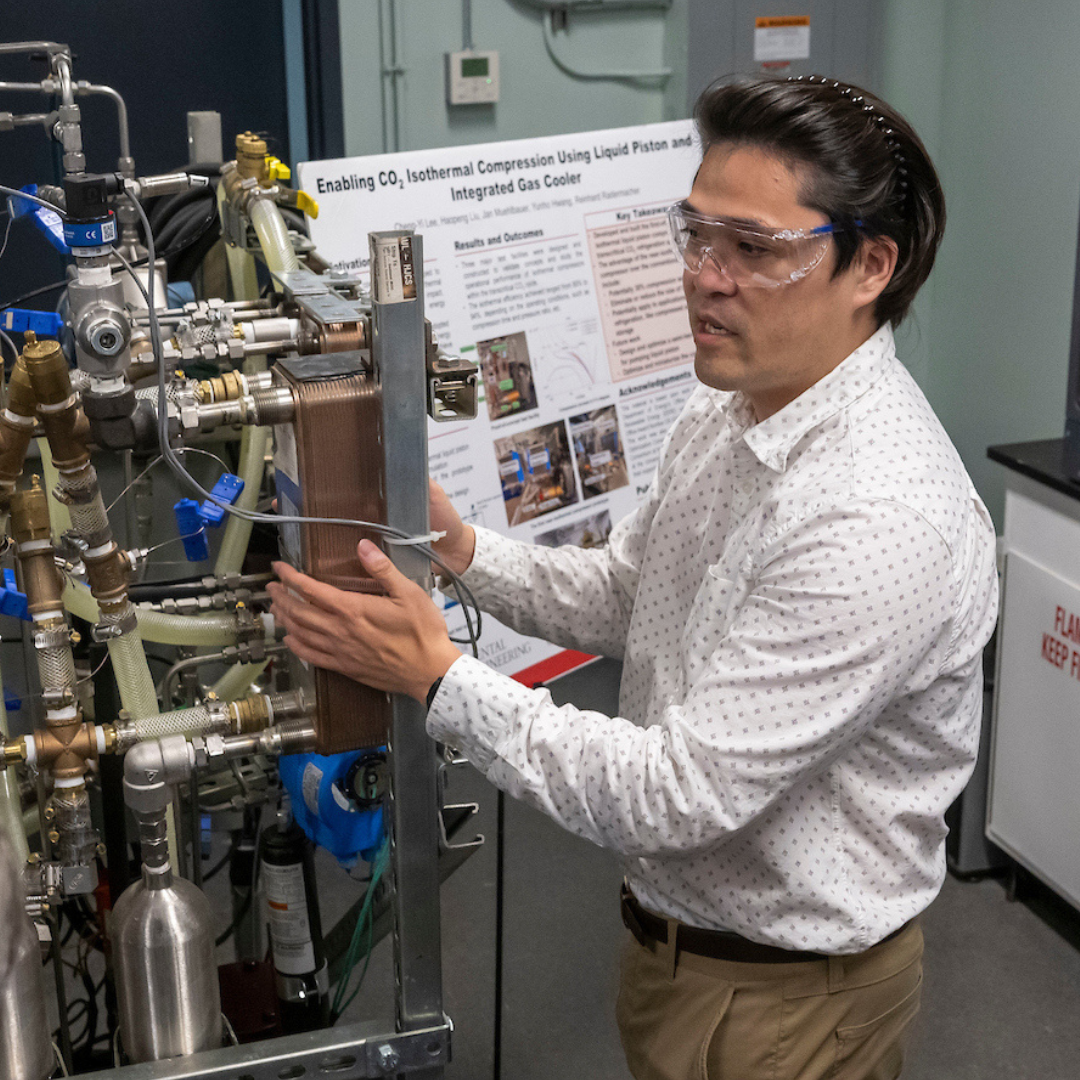News Story
Alumni Editorial: Offshore Wind Energy

David Catalini, Ph.D.
During the last few years, we saw an intense technological competition to determine who is the wind energy industry leader who can manufacture the largest wind turbine. On March 1, 2018, General Electric announced the Haliade-X, a 12 MW offshore wind turbine (General Electric, 2018). The turbine has a 220 m rotor with 107 m-long blades. On May 19, 2020, Siemens Gamesa Renewable Energy announced the SG 14 – 222, a 14 MW offshore wind turbine (can power boost to 15 MW), which has a 222 m diameter rotor with three 108 m-long blades (Siemens Gamesa Renewable Energy, 2020). Fresh off the pressroom, Vestas announced on February 10, 2021 their own 15 MW offshore wind turbine, with a 236 m-diameter rotor (Vestas Wind Systems A/S, 2021). The race is on. But until when? How long can a wind turbine blade be?
I have always approached this question from an exclusively technical point of view, thinking that there must be a fundamental physical limitation to the size a composite structure. But this is a very narrow point of view, because a wind turbine is the product a complex optimization problem of several factors including R&D, cost, production facilities and logistics. This means that even if it was technically possible to develop and build larger systems, it eventually might not be feasible or attractive because of any of the other factors (Siemens Gamesa Renewable Energy, 2021). This question is very difficult to answer and based on the last thirty years, everyone who ever made a prediction ended up being surpassed by the technological prowess of the industry. Even if it would be very difficult to answer, we might get a little insight into the near future by looking at auxiliary infrastructure currently being dimensioned for 20 MW systems (Fraunhofer Institute for Wind Energy Systems, 2020) and even 25 MW systems (Lindø Offshore Renewables Center, u.d.).
Even though envisioning the future of wind turbines this way is very energizing, it is important to completely open up the focus and go over a more wholesome view of how wind energy fits the picture as an element in a complete energy solution. For example, companies are currently working on developing new future value streams by:
- Finding synergies between solar and wind (both with complementary energy profiles) in hybrid power systems (Siemens Gamesa Renewable Energy, n.d.).
- Developing innovative energy storage solutions like ETES, developed by our colleagues at Hamburg University of Technology in collaboration with Siemens Gamesa Renewable Energy, Hamburg Energie and the Federal Republic of Germany, in which electric energy generated by wind can be stored as heat in a heat regenerator the size of a building, to be later reconverted to electricity upon demand. One interesting point of this approach is the possibility of repurposing of existing fossil fuel power plant infrastructure (Siemens Gamesa Renewable Energy, 2019).
- Generating “Green hydrogen” to serve fuel cells for heavy transport (Volvo Group, 2020), hydrogen-ready gas engines for the energy sector (MTU, 2020) and hydrogen jet engines for the aviation industry (Airbus, 2020).
I do not know about you, but personally, I cannot wait to see the future.
Bibliography
Airbus. (2020, 10 08). Hydrogen in aviation: how close is it? Understanding the challenges to widespread hydrogen adoption. Retrieved from https://www.airbus.com/newsroom/stories/hydrogen-aviation-understanding-challenges-to-widespread-adoption.html
Fraunhofer Institute for Wind Energy Systems. (2020). Research project aimed at boosting the grid compatibility of offshore wind turbines launched. Retrieved from https://www.iwes.fraunhofer.de/en/press---media/archive_2020/research-project-aimed-at-boosting-the-grid-compatibility-of-off.html
General Electric. (2018, March 1). GE announces Haliade-X, the world's most powerful offshore wind turbine. Retrieved from https://www.genewsroom.com/press-releases/ge-announces-haliade-x-worlds-most-powerful-offshore-wind-turbine
MTU. (2020, 12 10). Rolls-Royce introduces new mtu gas engine Series 500 for Power Generation . Retrieved from https://www.mtu-solutions.com/eu/en/pressreleases/2020/rolls-royce-introduces-new-mtu-gas-engine-series-500-for-power-generation.html
Siemens Gamesa Renewable Energy. (2019). Electric Thermal Energy Storage. Retrieved from https://www.siemensgamesa.com/en-int/products-and-services/hybrid-and-storage/thermal-energy-storage-with-etes
Siemens Gamesa Renewable Energy. (2020, May 19). Powered by change: Siemens Gamesa launches 14 MW offshore Direct Drive turbine with 222-meter rotor. Retrieved from https://www.siemensgamesa.com/newsroom/2020/05/200519-siemens-gamesa-turbine-14-222-dd
Siemens Gamesa Renewable Energy. (2021, 03 04). The future of offshore wind technologies. Retrieved from https://www.siemensgamesa.com/en-int/explore/journal/2021/03/siemens-gamesa-future-offshore-wind-technology
Siemens Gamesa Renewable Energy. (n.d.). Hybrid power & storage. Retrieved from https://www.siemensgamesa.com/en-int/products-and-services/hybrid-and-storage
Vestas Wind Systems A/S. (2021, February 10). Vestas launches the V236-15.0 MW to set new industry benchmark and take next step towards leadership in offshore wind. Retrieved from https://www.vestas.com/en/media/company-news?n=3886820#!NewsView
Volvo Group. (2020, 04 21). The Volvo Group and Daimler Truck AG to lead the development of sustainable transportation by forming joint venture for large-scale production of fuel cells. Retrieved from https://www.volvogroup.com/en-en/news/2020/apr/news-3640568.html
Published April 22, 2021









